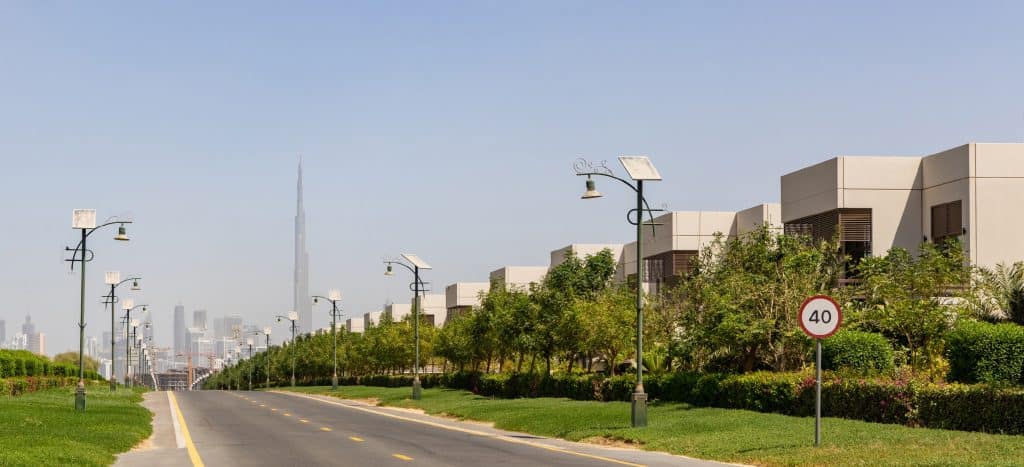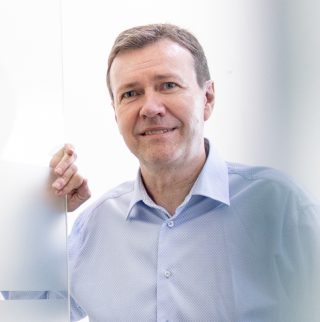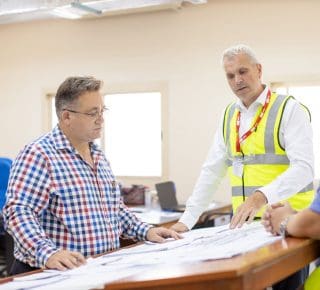Opportunities await precasters in the Middle East

Precast is relatively new to the Middle East market, which has traditionally taken advantage of cheap labour from abroad to power construction of buildings made with block work or which are cast in situ. New oversight and government policies point to new opportunities for precasters in the region.
Projects in the Middle East are usually designed to be cast in situ, according to Henrik Jensen, Country Director of Dubai Precast. “Precasters are obliged to redesign the building as a precast structure. In Europe, buildings are usually designed to be made precast by the consultants, the factory then produces the precast elements that the structure is built from. Here, our technical staff have to go back to the architectural drawings and the structural in- situ drawings to be able to convert the whole design into precast. It’s very challenging as it’s almost starting from scratch.”
Jensen thinks precast has not made as much inroad in the Middle East because of low labour costs. “UAE has a lot of labourers that come from low-cost countries. This is why even though construction in-situ requires far more manpower than precast does, it could still come out cheaper. This means that if the cost of building something in precast can’t match the price another contractor submitted to complete the project using traditional in situ construction or if a contractor has already secured a project based on traditional cheap labour, it’s very hard to convince them to move to precast.”
However, Curt Lindroth, Area Sales Director, Middle East for Elematic, says that the situation is changing. “Labour used to be very cheap in the region, but in recent years, the cost and salaries of foreign workers are increasing. Governments in the Middle East, particularly in Saudi Arabia, are looking to employ more of their own citizens. This has made it more difficult to get a huge number of foreign workers to the region.”
“In situ casting is labour-intensive. People are looking for alternatives that will enable them to finish construction projects faster, provide better quality while reducing the number of workers that are needed during the building process. This could be an opportunity for precast factories in the area,” Lindroth points out.
Population boom triggers expansion
Jensen, who has been in the Middle East precast industry for over 20 years, points to the tremendous population growth in the UAE as one of the drivers of the boom in the construction industry. “The population grew from 2.5 million to over 9 million in two decades, which of course translated into a lot of projects in the construction industry. There were perhaps three or four precast factories back in the beginning, now there are about 40. The precast industry has a lot of ups and downs. Sometimes, we think projects are going to be made in precast, but many are still using in situ casting technology.”
Lindroth sees more opportunities than challenges for precast in the Middle East. “The mass production of villas, for example, is a good niche for precasters. It might sound almost contradictory to use mass production and villas in the same sentence, but it’s on a different level than the mass produced houses we see in Europe, for example. Again, seen from a European perspective, these are luxury villas and precast is the technology of choice for these.”
Mass production of villas started around the turn of the century, according to Lindroth. “These mass produced villas are something that truly differentiates the Middle East from the rest of the world. But there is a huge backlog of housing in countries like Saudi Arabia and a need to create new investment opportunities in places like Dubai and Bahrain. In the UAE, there have already developed a lot of areas for precast villas. Worth mentioning are the Meydan Gated Community, the Arabian Ranches and the Akoya Oxygen master community, a luxury housing development which will include the Middle East’s first tropical rainforest.”
Shopping malls, which in the Middle East are easily between 500 000 sq m to 1.5 million sq m in size, are also seeing a boom in construction. “Shopping malls are part of a drive to encourage tourism in the region because of the low tax rate on goods,” Lindroth says. “More importantly, because of the climate here, shopping malls have become a place where locals and residents can escape from the heat. You’ll find for example skiing areas in malls, indoor theme parks or aquariums or a zoo. It’s a place people can hang out in to escape the high temperatures.”
Tightening regulations
In recent years, there’s been a tightening of construction regulations in Middle Eastern countries. “There’s been an uptick in oversight in the construction industries. As more and more buildings are built, there’s greater attention to safety. Some buildings constructed in block work or cast in situ might not actually be up to code,” Lindroth explains. “In Saudi Arabia, for example, new buildings are required to have insulation. They’re realizing that using insulated external walls will actually reduce power consumption significantly because cooling down a building takes more energy.”
“Fire and safety is something that has put the spotlight on different building materials and methods as well. From this perspective, concrete has proven to be safer than aluminium insulated panels. Precast producers just have to be aware of the rules and regulations, because they can change quite fast.”

Henrik Jensen
Looking to the future
According to Lindroth, the current precast capacity in the region varies widely per country. “In the UAE, there’s fairly good capacity. But in Saudi Arabia, the capacity is actually not enough. Some companies there have faced economic challenges, but it’s not from the lack of projects. It’s more about how precast companies go about managing their operations and the full construction cycle. They need to learn how to channel projects from contractors. On the government side, they also need to look deeper into how to more efficiently utilize the capacity that’s there.”
UPC Dubai is one of the first precast companies in the region, and is a pioneer of hollow core technology. Its General Manager Matthew Palmer says that while precast has come a long way – being the preferred solution particularly for building villas and other residential developments – there’s still a lot of room for the industry to develop. “Precast has definitely made inroads and there’s a lot of potential in the residential market, considering how precast makes it possible to deliver projects more quickly than traditional methods and makes for a safer and cleaner build site. If the residential market continues to grow, then there’s going to be more space to grow in the industry. I don’t think the future is going to be about the latest tech, I don’t think the market is ready for that.”
Jensen agrees, while also pointing out that it is difficult to talk about the future. “Automation is certainly going to be part of the picture, as labour cost will rise over time. There’s talk of 3D printed concrete, but that technology is still in its very early stages. A lot of research still needs to be done before authorities are able to accept that, especially in earthquake-prone regions.”
“I think it will be more about combining technologies that are already available. We’re still facing permit issues from authorities about doing precast building past a certain height, which hopefully will ease over time, as these types of construction are done every day in many other parts of the world. There’s also talk about modular buildings or prefabricated bathrooms. I think those are going to take a share of the market in the future. But it also comes down to cost. Nobody here wants to pay more than the cost of a traditional building construction for the sake of using the latest technology, hence cost, time and quality all have to work together,” Jensen concludes.

Matthew Palmer (on the left) and Curt Lindroth.